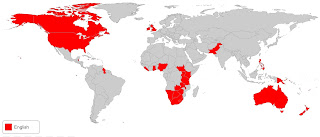"[There is] no correlation between temperature and wind energy supply. Again, this is exactly what we expect - what we can say for sure is that there isn't less wind when temperature are high. Those who claim a strong negative correlation (Ridgway), and those who claim a strong positive correlation (no one) are wrong - it's shotgun scatter."In my original post, I quoted the press release, and claimed that:
'As the transcript for the hearing is currently unavailable, it's impossible to determine exactly what was said during the hearing'.The transcript remains unavailable, but Electranet's submission to the parliamentary inquiry is public - I didn't realise that at the time of writing, which was a genuine mistake. It's here [PDF]. Let's have a look at Electranet's remarks, regarding the 'eight percent availability' figure:
"Based on observed performance, AEMO reports that an estimated 8% of the installed wind capacity is available at peak load times on hot summer days."It would seem here that Electranet are unambiguous in their assertions of the 8% availability of wind energy on 'hot summer days', and consequently, that David Ridgway reported their remarks quite faithfully.
Whilst we're on the topic, let us delve into the origin of AEMO's 8% figure, and whether it's being interpreted correctly.
From Electranet's PDF, there seems to be little to indicate that the submission is referring to 'firm' availability, rather than 'actual'. From their statement alone, it would indeed seem that wind farms perform abysmally during those times electricity is highest in demand by Australian residences.
AEMO also made a submission to the inquiry. Theirs is #160 [PDF]. Included in their submission they write:
"For the purposes of assessing reliability in the presence of wind power, AEMO develops a wind power contribution factor, which is the percentage of installed wind power capacity in a region can be relied upon, with an 85 percent confidence level, to generate at peak times. For South Australia this has been determined as 8.3 percent. Therefore for every 100 MW of wind capacity available to operate, AEMO considers 8.3 MW as being firm for the purpose of meeting peak demand."Here's the analysis that AEMO cite in this paragraph - it's interesting and rigorous work, and you can also download the data set, if you bear the same irrational fondness for spreadsheets that I do.
AEMO derived the 8.3% from actual historical performance - they explain the 'confidence interval' much more clearly than I can:
"For example, based on the historical performance of wind generation during the top 10% of summer demand periods, South Australian wind generation contributes at least 8.3% of its installed capacity for 85% of the time."Does this mean that wind is pumping at a measly 8% capacity during peak summer demand periods? We're glossing over two important words in their statement:
'at least'
For about 85% of the time, wind energy will be more than 8.3% - it's a minimum, not an average. This is the key distinction that is left out of Electranet's statement. The chart above, taken from page 11 from the South Australian wind study published by AEMO illustrates this beautifully - keep in mind that these are for the 'top 10% of season demand periods" - the times when demand is the highest. As AEMO state:
"Wind generation contributes approximately 20% or more of its installed capacity for 50% of the time."AEMO's analysis is a mathematically sound method for determining the contribution of wind energy to the electricity market, during periods of high demand.
Let's briefly revisit the phrase 'SA has more than 1000 megawatts of installed wind power capacity sitting uselessly, blades not turning, when demand is greatest'.
Looking at 2011-2012, we can access the accuracy of this quite directly:
The statement is true for 32.1% of peak demand periods in South Australia. AEMO's data shows that for 67.9% of peak summer demand periods, wind is generating at >205 megawatts - ie, <1,000 megawatts of generation is offline
I raise these figures to highlight an important point - though wind energy spits out electrons like any other generator, its pattern of generation is not easily comparable to other fuel types in the energy market. The assessment of wind energy needs careful analysis, and a string of inevitable caveats and clarifications.
The complex nuances of the energy market are not often at the forefront of public discussion on wind energy. As I touched on previously, the web-based network of anti-wind groups will often seize on figures like '8%', and the many intricacies and caveats of the calculation of that value fade into the past.
In my last post, I stated that 'I suspect [Electranet's] statements were slightly more nuanced than is made out by Ridgway and his advisers.' I was quite wrong about this - Electranet did strongly infer that the 8% figure was a typical level of wind energy generation for the hottest days and it was very reasonable for David Ridgeway to rely on Electranet’s submission.
This does not change the fact that AEMO’s data shows the typical wind generation to be about 27% of capacity on the hottest days---which is not far below the year round wind energy capacity factor of about 30% .
Click here for the spreadsheet used to generate the usefulness chart, or explore the raw data below.















